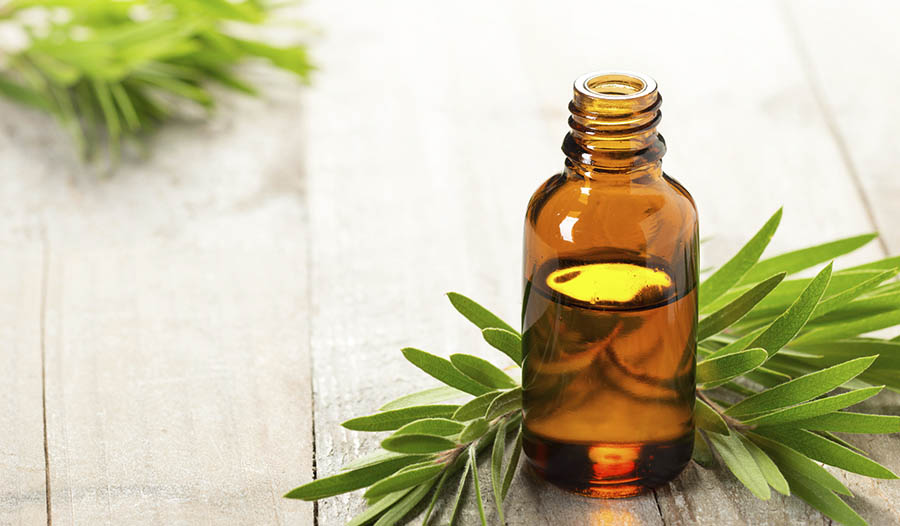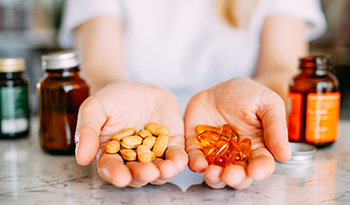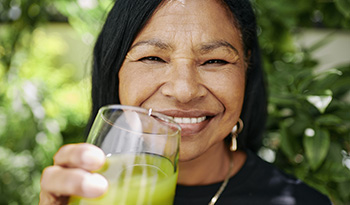Top 13 uleiuri esențiale și modul în care acestea vă pot aduce beneficii sănătății

De la începutul civilizației umane, oamenii au căutat beneficiile uleiurilor esențiale . Egiptenii au folosit uleiuri esențiale în timpul procesului de mumificare și a sărbătorilor ceremoniale. Uleiurile erau foarte apreciate, adesea oferite ca cadouri și chiar tranzacționate ca monedă. În Biblie, cei Trei Înţelepţi i-au adus pruncului Iisus daruri de aur, tămâie şi smirnă — ultimele două erau uleiuri esenţiale.
Uleiurile esențiale au fost folosite de strămoșii noștri în parfumuri și parfumuri. Pe lângă aroma lor plăcută, majoritatea au și beneficii pentru sănătate. Uleiurile esențiale sunt frecvent utilizate în difuzoarele de aer, un dispozitiv care aerosolizează amestecul ulei-apă în aer. Utilizarea topică pe piele este obișnuită, la fel ca adăugarea câtorva picături în apa de baie. Unele uleiuri esențiale pot fi, de asemenea, luate intern.
Iată primele 13 uleiuri esențiale și beneficiile lor pentru sănătate și frumusețe.
1. Lavandă (Lavandula officinalis)
Mirosul dulce al lavandei este probabil unul dintre cele mai cunoscute și recunoscute dintre toate uleiurile esențiale. Uleiul a fost folosit de mii de ani de culturi din întreaga lume. Cea mai veche utilizare înregistrată a fost de greci și romani. Lavanda poate fi utilizată pentru următoarele:
- Reducerea stresului - Inhalarea lavandei poate ajuta la reducerea nivelului de stres fizic și mental
- Insomnie - Ajută la îmbunătățirea calității somnului dacă este utilizat local și inhalat
- Tensiunea arterială - Un studiu din 2017 a arătat că lavanda a scăzut tensiunea arterială după o intervenție chirurgicală pe inimă deschisă, în timp ce un studiu din 2015 a arătat, de asemenea, beneficii ale tensiunii arteriale
- Repelent împotriva insectelor - Deși mirosul este atractiv pentru oameni, insectelor nu le place
- Mușcături de insecte - Ajută la minimizarea riscului de infecție și reduce mâncărimea atunci când este aplicat local
- Arsuri ușoare - Ajută la reducerea durerii cauzate de arsuri. Aplicați direct sau amestecați cu ulei de nucă de cocos
- Eczemă - Aplicați direct pe pielea uscată sau amestecați cu ulei de nucă de cocos pentru ameliorarea simptomelor
- Greață - Ajută la minimizarea efectelor greaței. Puneți o picătură în spatele urechilor sau luați în considerare să consumați o picătură în gură sau într-un pahar mic de apă
- Acnee - Aplicați local pentru a preveni agravarea acneei
- Ameliorarea durerii - Ajută la ameliorarea mușchilor și articulațiilor dureroase atunci când este aplicat în timpul unui masaj
- Ameliorarea durerii în timpul intervenției chirurgicale — Studiile arată că utilizarea lavandei în timpul intervenției chirurgicale reduce nivelul durerii
- Sindromul tunelului carpian - Studiul S2017 din Journal of Hand Therapy a arătat că lavanda reduce durerea atunci când este aplicată local
- Creșterea părului — Studiile care utilizează modele animale arată că uleiul de lavandă poate ajuta la creșterea părului
- Digestie- Ajută la procesul digestiv
Uleiul esențial de lavandă se amestecă bine cu uleiurile de cuișoare și de rozmarin .
2. Rozmarin (Rosmarinus officinalis)
Rozmarinul este o plantă obișnuită care este adesea cultivată în grădinile de acasă. S-a demonstrat că are multe beneficii pentru sănătate și, potrivit unui articol din New York Times, rozmarinul joacă un rol important în dieta uneia dintre cele mai sănătoase și mai vechi populații din lume, cei care locuiesc în Acciaroli, Italia. Rozmarinul poate fi utilizat pentru următoarele:
- Memorie - Un studiu din 2017 a concluzionat: „Inhalarea uleiului esențial de rozmarin a crescut memorarea numerelor”
- Leziuni cerebrale traumatice (TBI) - Un studiu din 2016 care a utilizat animale a arătat o funcție cerebrală îmbunătățită la subiecții răniți
- Căderea părului - Un studiu din 2015 a arătat o creștere îmbunătățită a părului atunci când este aplicat local pe scalp. Cu toate acestea, a fost nevoie de 6 luni pentru ca o diferență să fie văzută
- Infecții respiratorii superioare- Inhalarea unui amestec de plante care conține rozmarin a redus simptomele infecției
- Spasme musculare — Acest ulei esențial ajută la relaxarea mușchilor atunci când este utilizat în timpul unui masaj
- Protecție antioxidantă - Rozmarinul este un antioxidant puternic conform studiilor
- ATENȚIE: Unii pot fi sensibili la acest ulei esențial și câțiva au avut reacții cutanate
Rozmarinul se amestecă bine cu uleiuri de lavandă și mentă
3. Arbore de ceai (Melaleuca alternifolia)
Acest ulei esențial este derivat din frunzele arborelui Melaleuca, care se găsește mai ales în Australia.Aroma arborelui de ceai este descrisă ca fiind medicinală și proaspătă. Arborele de ceai are multe beneficii:
- Antifungice — Studiile au arătat că acest ulei are proprietăți antifungice. Am recomandat frecvent utilizarea acestuia pentru pacienții care caută un tratament de primă linie pentru ciuperca unghiilor. Vă recomand să o aplicați o dată până la de două ori pe zi pe unghie. Am văzut rezultate bune atunci când sunt aplicate în mod consecvent. Poate fi aplicat și pe piele pentru a ajuta la tratarea picioarelor sportivului, cunoscută de medici sub numele de tinea pedis
- Antibacterian - Un studiu din 2017 efectuat pe șoareci a arătat că uleiul de arbore de ceai inhalat ar putea fi util în combaterea pneumoniei. Sunt necesare mai multe cercetări înainte de a fi utilizate la oameni în acest fel.
- Un studiu din 2017 din Roma, Italia a arătat că clătirea gurii cu ulei de arbore de ceai a fost utilă la cei cu inflamație din cauza gingivitei
- Vindecarea rănilor - Aplicați local pentru a ajuta la prevenirea infecției
- Ajută la controlul mătreții - Aplicați local pe scalp pentru a ajuta la reducerea mătreții
- Repelent împotriva insectelor - Când este aplicat local, ajută la menținerea insectelor departe
Arborele de ceai se amestecă bine cu ulei de lavandă și smirnă
4. Lămâie (Citrus limonum)
Lămâia este un miros familiar, acru și dulce în același timp. Acest ulei esențial are multe utilizări. Este utilizat pe scară largă în produsele de înfrumusețare datorită proprietăților sale antioxidante.
- Indigestie — Luata cu un pahar de apa, poate stimula procesul digestiv
- Repelent împotriva insectelor - Când este aplicat local, ajută la menținerea insectelor departe
- Dezinfectant - Amestecat cu apă, poate fi folosit pentru a curăța ușor suprafețele
- Durere în gât - Proprietățile antioxidante ajută la uciderea virusului în gât
- Îngrijirea pielii — Amestecat cu ulei de nucă de cocos și aplicat pe piele, ajută la protejarea împotriva oxidării.
Lămâia se amestecă bine cu ulei de eucalipt .
5. Mentă (Mentha piperita)
Menta este o plantă binecunoscută și ulei esențial. Este de fapt un hibrid de mentă de apă și mentă. Mirosul său este ascuțit și proaspăt, iar una dintre componentele sale principale este mentolul. În ultima vreme, a fost folosit ca aromă în guma de mestecat. Menta este originară din Europa și are numeroase beneficii pentru sănătate.
- Sindromul intestinului iritabil (IBS) - Uleiul de mentă ajută la ameliorarea simptomelor la cei cu IBS
- Dureri de cap — Poate fi de ajutor în cazul durerilor de cap de tensiune
- Aromă alimentară - Poate fi adăugată la alimente pentru aromatizare suplimentară
- Infecția unghiilor - Aplicată local, poate ajuta la infecțiile fungice
- Infecții cutanate - Un studiu din 2012 a arătat protecție împotriva infecțiilor cutanate
- Infecție respiratorie superioară - Inhalarea unui amestec de plante care conține mentă reduce simptomele infecției
- Mâncărime datorată sarcinii - Aplicată local, menta ajută la minimizarea mâncărimii datorate sarcinii, potrivit studiilor. Evitați consumul oral
- Eczemă - Aplicată local, ajută la minimizarea iritației pielii
- Creșterea părului — Un studiu din 2014 în Toxicological Research a demonstrat că atunci când menta a fost aplicată local, ar putea ajuta la creșterea părului
Menta se amestecă bine cu uleiuri de lavandă, rozmarin și eucalipt
6. Eucalipt (Eucalyptus globulus, Eucalyptus sideroxylon și Eucalyptus torquata)
Eucaliptul este originar din Australia, unde aborigenii au folosit eucalipt pentru a ajuta la tratarea infecțiilor sinusurilor, a infecțiilor respiratorii și a durerii. Evitați consumul oral al uleiului.
- Infecție respiratorie superioară - Inhalarea unui amestec de plante care conține eucalipt minimizează simptomele infecției conform studiilor
- Antibacterian - Un studiu din 2012 a arătat protecție împotriva infecțiilor bacteriene ale pielii atunci când este aplicat local
- Antifungic - Eucaliptul aplicat local poate ucide ciuperca
- Proprietăți antitumorale - Studiile arată că eucaliptul poate ucide celulele tumorale în laborator
- Deodorant natural - Aplicați local pe axilă.
Eucaliptul se amestecă bine cu uleiuri de lavandă și lămâie .
7. Cuișoare (Syzygium aromaticum)
Derivat din arborele cuișor . Cuișorul este indigen din Asia de Sud-Est și Indonezia și are numeroase beneficii pentru sănătate, potrivit unui studiu din 2014, inclusiv:
- Proprietăți antibacteriene - atunci când sunt aplicate local pe răni, pot ajuta la prevenirea infecției
- Ameliorarea durerii - Studiile arată proprietăți de ameliorare a durerii atunci când sunt aplicate local pe articulații și mușchi dureroase.
- Dureri de dinți — Folosit în secolul 13 pentru ameliorarea durerii
- Repelent împotriva insectelor - Când este aplicat local, ajută la menținerea insectelor departe
- Afte orală - Uleiul de cuișoare poate fi utilizat pentru tratamentul aftelor orale
8. Mușețel (Anthemis nobilis)
Mușețelul este consumat în mod obișnuit ca ceai din plante pentru cei care doresc să doarmă bine. Are un miros dulce, fructat.Ca ulei esențial, are, de asemenea, numeroase beneficii pentru sănătate.
- Anxietatea — are un efect calmant
- Depresia - un studiu pe animale arată că inhalarea mușețelului are efecte anti-depresive.
- Beneficiile alergiilor și astmului
- Antiinflamator — se aplică local pe zona afectată
- Vindecarea rănilor - studiile arată că aplicarea topică este utilă în vindecarea rănilor și prevenirea infecției rănilor cutanate
- Insomnie
- Eczemă — aplicată local
- Spasme musculare — aplicate local
Mușețelul se amestecă bine cu uleiuri de iasomie și trandafir .
9. Tămâie (Boswellia carterii)
Poate cel mai bine cunoscut ca un cadou oferit de cei trei înțelepți, tămâia a fost folosită frecvent în parfumuri. Are o aromă lemnoasă, balsamică. Astăzi, este utilizat în mod obișnuit în ceremoniile religioase, inclusiv în cele de către Biserica Catolică. Tămâia este cunoscută și sub numele de boswellia oamenilor din India și Africa, care o folosesc în scopuri medicinale și a fost comercializată în Somalia acum 5.000 de ani. Este cunoscut faptul că:
- Previne infecțiile cu drojdie - Studiile arată că tămâia poate ucide drojdia patogenă
- Calmant eficient — poate ajuta la calmarea minții, mai ales atunci când uleiul este aerosolizat
- Dureri articulare - Studiile arată că boswellia poate ajuta durerea asociată cu artrita reumatoidă și osteoartrita. Luați în considerare frecarea uleiului pe articulația afectată sau administrarea de boswellia ca supliment oral.
- Astm — Ajută la reducerea inflamației la cei cu astm, conform studiilor
- Boala Crohn — Boswellia poate fi de ajutor, potrivit unui studiu din 2001
Tămâia se amestecă bine cu uleiuri de lavandă și trandafir .
10. Myrrh (Smirna )
Un ulei esențial folosit în antichitate, smirna a fost menționat și în Biblie, în Vechiul Testament și în Noul Testament de 152 de ori.În plus, în India, este frecvent utilizat în medicina ayurvedică pentru durerile de spate și corp.
- Antioxidant - Protejează organismul împotriva daunelor oxidative
- Proprietăți antibacteriene
- Protecție antivirală
- Protecție antifungică
Smirna se amestecă bine cu uleiuri de tămâie, geranium și cuișoare .
11. Grapefruit (Citrus paradisi)
Grapefruitul provine din Barbados, o insulă din Caraibe. Grapefruitul este un hibrid al unui fruct de portocale și pomelo. China este în prezent cel mai mare producător mondial de grapefruit, în timp ce Statele Unite sunt pe locul al doilea. Uleiul esențial de grapefruit este extras din fructe.
- Stres și anxietate - Un 2017 din Terapii complementare în medicină a arătat că cei supuși unei proceduri de colonoscopie au simțit mai puțină anxietate atunci când uleiul esențial de grapefruit a fost în uz
- Acnee - Uleiul de grapefruit are proprietăți antimicrobiene, astfel încât aplicarea locală este o modalitate excelentă de a ajuta la curățarea tenului
- Răni și arsuri - Ajută la protejarea rănilor și arsurilor împotriva infectării
12. Oregano (Origanum vulgare)
Oregano este o plantă cu flori originară din regiunea mediteraneană. A fost folosit de secole și are numeroase beneficii pentru sănătate.
- Proprietățile antiinflamatorii trebuie aplicate local
- Boala cardiacă — Studiile arată că previne ateroscleroza sau înfundarea arterelor.
- Digestie- Ajută la problemele digestive.
- Leaky Gut- Protejează intestinul împotriva deteriorării și ajută la crearea unei bariere intestinale sănătoase.
- Proprietăți anti-parazitare
- Protejează împotriva cancerului
- Protejează împotriva infecțiilor fungice, conform cercetărilor din Scientific Reports
13. Ghimbir (Zingiber officinale)
Această plantă este folosită în alimente, dar și ca ulei esențial. Ghimbirul are multe beneficii pentru sănătate.
- Anti-greață - Folosit frecvent de femeile însărcinate și de cele supuse chimioterapiei pentru a ajuta la controlul greaței
- Ameliorarea durerii — Aplicată local pe articulația afectată, are proprietăți antiinflamatorii
- Efect laxativ — Ajută la mișcarea intestinelor
Referințe:
- Salamati A, Mashouf S, Mojab F. Efectul inhalării uleiului esențial de lavandă asupra semnelor vitale în ICU de chirurgie cardiacă deschisă. Jurnalul iranian de cercetare farmaceutică: IJPR. 2017; 16 (1): 404-409.
- Complement Ther Med. 2015 iunie; 23 (3): 331-8. doi: 10.1016/j.ctim.2014.12.001. Epub 2014 11 decembrie.
- Completează Ther Clin Pract. 2016 noiembrie; 25:75-80. doi: 10.1016/j.ctcp.2016.08.002. Epub 2016 3 august.
- J Hand Ther. 2017 10. august pii: S0894-1130 (16) 30251-4. doi: 10.1016/j.jht.2017.07.004. [Epub înainte de tipărire]
- Lee BH, Lee JS, Kim YC. Efectele de promovare a creșterii părului ale uleiului de lavandă la șoareci C57BL/6. Cercetări toxicologice. 2016; 32 (2): 103-108. doi: 10.5487/tr.2016.32.2.103.
- https://www.nytimes.com/2016/10/20/world/what-in-the-world/rosemary-and-time-does-this-italian-hamlet-have-a-recipe-for-long-life.html?_r=0
- O.V. Filiptsova, L. V. Gazzavi-Rogozina, I. A. Timoșina, O.I. Naboka, Ye.V.Dyomina, A. V. Ochkur, Uleiul esențial de rozmarin și efectul său asupra imaginii umane și a memoriei numerice pe termen scurt, În Jurnalul egiptean de științe de bază și aplicate, volumul 4, numărul 2, 2017, paginile 107-111.
- Neurosci Lett. 2016 27 mai; 622:95-101. doi: 10.1016/j.neulet.2016.04.048. Epub 2016 22 aprilie.
- Skinmed. 2015 ianuarie-februarie; 13 (1): 15-21. Rozmarinul ajută la creșterea părului
- Fiziopatologie. 2017 septembrie 14. pii: S0928-4680 (17) 30005-6. doi: 10.1016/j.pathophys.2017.08.002. [Epub înainte de tipărire]
- J Pharm Pharmacol. 2017 15 august doi: 10.1111/jphp.12788. [Epub înainte de tipărire]
- SALVATORI C, BARCHI L, GUZZO F, GARGARI M. Un studiu comparativ al efectelor antibacteriene și antiinflamatorii ale clătiței de gură care conține ulei de arbore de ceai. Oral și implantologie. 2017; 10 (1): 59-70. doi: 10.11138/orl/2017.10.1.059.
- Fitomedicină. 2012 15 august; 19 (11): 969-76. doi: 10.1016/j.phymed.2012.05.014. Epub 2012 26 iunie.
- Ben-Arye E, Dudai N, Eini A, Torem M, Schiff E, Rakover Y.Tratamentul infecțiilor tractului respirator superior în îngrijirea primară: un studiu randomizat folosind plante aromatice. Medicină complementară și alternativă bazată pe dovezi: eCam. 2011; 2011:690346. doi: 10.1155/2011/690346.
- Akhavan Amjadi M, Mojab F, Kamranpour SB. Efectul uleiului de mentă asupra tratamentului simptomatic al pruritului la femeile gravide. Jurnalul iranian de cercetare farmaceutică: IJPR. 2012; 11 (4): 1073-1077.
- Oh JY, Park MA, Kim YC. Uleiul de mentă promovează creșterea părului fără semne toxice. Cercetări toxicologice. 2014; 30 (4): 297-304. doi: 10.5487/tr.2014.30.4.297.
- Fitomedicină. 2012 15 august; 19 (11): 969-76. doi: 10.1016/j.phymed.2012.05.014. Epub 2012 26 iunie.
- Cancer Biol Ther. 2008 martie; 7 (3): 399-403. Epub 2007 2 decembrie. (Eucaliptul are proprietăți antifungice și canceroase)
- Cortés-Rojas DF, de Souza CRF, Oliveira WP. Cuișoare (Syzygium aromaticum): un condiment prețios. Jurnalul Asiatic al Pacificului de Biomedicină Tropicală. 2014; 4 (2): 90-96. doi: 10.1016/S2221-1691 (14) 60215-X.
- Sci China Life Sci. 2017 iunie; 60 (6): 647-655. doi: 10.1007/s11427-016-9034-8. Epub 2017 16 mai.
- Srivastava JK, Shankar E, Gupta S. Chamomile: Un medicament pe bază de plante al trecutului cu un viitor luminos. Rapoarte de medicină moleculară. 2010; 3 (6): 895-901. doi: 10.3892/mmr.2010.377.
- van Vuuren SF, Kamatou GP, Viljoen A.M. Compoziția volatilă și activitatea antimicrobiană a douăzeci de probe comerciale de ulei esențial de tămâie. Jurnalul sud-african de botanică. 2010; 76 (4): 686—691. doi: 10.1016/j.sajb.2010.06.001
- Planta Med 2006; 72 (12): 1100-1116 Acizi boswellici în bolile inflamatorii cronice
- Kimmatkar N, Thawani V, Hingorani L, Khiyani R. Eficacitatea și tolerabilitatea extractului de Boswellia serrata în tratamentul osteoartritei genunchiului - un studiu randomizat dublu-orb controlat placebo Fitomedicină 2003; 10:3-7
- Gupta I, Gupta V, Parihar A, Gupta S. Ludtke R, Safayhi H. și colab. Efectele rășinii gingivale Boswellia serrata la pacienții cu astm bronșic: rezultatele unui studiu clinic dublu-orb, controlat cu placebo, de 6 săptămâni. Eur J Med Res. 1998; 3 511-4
- Gupta I, Parihar A, Malhorta P, Gupta S, Ludtke R, Safayhi H. și colab. Efectele rășinii gingivale de Boswellia serrata la pacienții cu colită cronică. Planta Mediu 2001; 67 391-5
- Jurnalul de cercetare a plantelor medicinale vol. 5 (8), pp. 1382-1389, 18 aprilie 2011 Disponibil online la http://www.academicjournals.org/JMPR
- http://www.sciencedirect.com/science/article/pii/S0278691510001754
- Hong-kui Wei, Gang Chen, Ruo-Jing Wang, Jian Peng, Uleiul esențial de oregano a scăzut susceptibilitatea la disfuncția indusă de stresul oxidativ a barierei epiteliale intestinale la șobolani, În Journal of Functional Foods, Volumul 18, Partea B, 2015, Paginile 1191-1199
- Puškárová A, Bučková M, Kraková L, Pangallo D, Kozics K. Activitatea antibacteriană și antifungică a șase uleiuri esențiale și cito-genotoxicitatea lor la celulele HEL 12469 umane. Rapoarte științifice. 2017; 7:8211. doi: 10.1038/s41598-017-08673-9.
Declarație de declinare a responsabilității:Acest blog nu are ca scop să ofere un diagnostic.













































































 Cuprins
Cuprins















